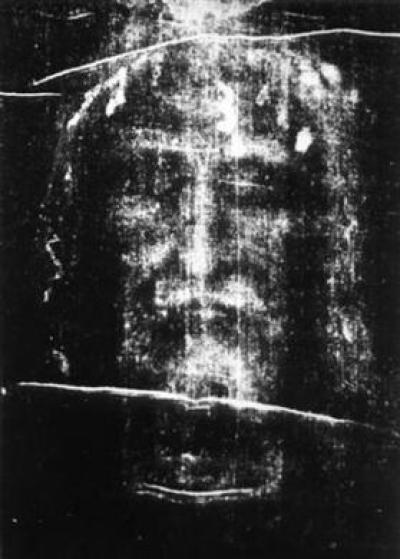Shroud of Turin: Still Shrouded in Mystery

"The most beautiful thing we can experience is the mysterious. It is the source of all true art and science. He…who can no longer pause to wonder and stand wrapped in awe, is as good as dead—his eyes are closed. The insight into the mystery of life…has also given rise to religion." No biblical prophet uttered those words. Instead they come from the greatest scientific genius of the 20th century, Albert Einstein. His words capture the continuing public fascination with the Shroud of Jesus at Turin, Italy. His words also demonstrate that deep down; no conflict exists between science and religion—despite what atheists contend.
As a professor, I can attest that despite the miraculous benefits technology affords researchers, educators, and students alike—most of us in higher education are, by Einstein's definition, the walking dead: we "no longer wonder and stand wrapped in awe." Awe fails to constitute a measurable learning outcome required by a university-accrediting agency. Neither is it easily explicable to parents paying significant tuition and looking for return on their investment. Yet, sometimes a picture truly is worth a thousand words.
Last week arguably the greatest living expert on the Shroud of Turin, the official photographer of the NASA scientists' investigation (STRP), Barrie Schwortz, visited my university. He arrived just days before CNN launched its six-part series: "Finding Jesus: Faith. Fact. Forgery." The premiere episode highlighted the mysterious linen. Schwortz began as skeptical as a hardnosed journalist in 1978, equipped with specialized lenses and expecting to find a medieval forger's brushstrokes. Trouble was, no brushstrokes. And after five straight days and nights of unfettered access to the Shroud and scores of empirical analyses later—no scientific explanation emerged for how the forensically accurate image of a scourged and crucified man got on the Shroud. It wasn't a painting—there was no paint; it wasn't a photograph—no trace of silver left behind; and it wasn't a scorch—ultraviolet fluorescence proved that. What was it then? For lack of a better word, a mystery.
The skeptical twenty something's in my dimly-lit classroom soon embraced that mystery as Schwortz's PowerPoint showed what the Shroud looked like when its first photographer, Secondo Pia, saw it in his photonegative plate in 1898. He nearly dropped that glass, when the lights and the darks were reversed, revealing the crucified man staring back in ghostly clarity with the properties of a photographic positive. So before a medieval forger could have faked the Shroud that person would have had to conceive photography 500 years before it was invented—and then thrown away the recipe.
Students were also mesmerized when Schwortz showed them the anatomical accuracy of the scourge marks. The Romans used a flagrum with little dumbbell-shaped weights at the tip of its whip. Archeologically uncovered flagrums match the marks on the Shroud. Again, no medieval forger could foresee this. And the Shroud contains human blood. "Red blood," said Schwortz, "which for 17 years kept me a skeptic. Centuries-old blood should be dark and brown." His skepticism vanished, however, when blood-expert Alan Adler informed him that severe trauma victims emit bilirubin into their blood, turning it amber—forever.
Perhaps the greatest mystery is suffering itself. When he visited the Shroud in 1998, Pope John Paul II (suffering from advanced Parkinson's) called it "an icon of the suffering of the innocent of all time" and "an extraordinary witness to the suffering of Christ."
Despite our technologically advanced age, profound pain persists. This fuels the continued fascination with the Shroud. More aptly than they realized, the ISIS terrorists characterized Italy (and Western civilization more generally) as the land "signed by the Cross" in their video depicting the decapitation of 21 innocent Egyptian martyrs. An astute description from that murderous band.
As a Christian university, Azusa Pacific affirms the authority of Scripture and Lordship of Christ, focusing on John 15:1-8 as we approach Easter. In the passage, Jesus says: "I am the Vine, you are the branches." Paul explains: "If we have been planted together in the likeness of his death, we shall be also in the likeness of his resurrection…" (Rom. 6:5). Throughout history, the Church substantiates that suffering is salvific; it presages life eternal. And it drives the rare public appearance of the Shroud (something which happens only a handful of times each century) April 19- June 24, during Easter season.
As a medieval historian, I'll be leading a group of Americans on pilgrimage to the Cathedral of Turin to see the sacred relic (a very medieval thing to do). When I stand before the Shroud, I shall be mindful of the words of Einstein—in awe of mystery.





























